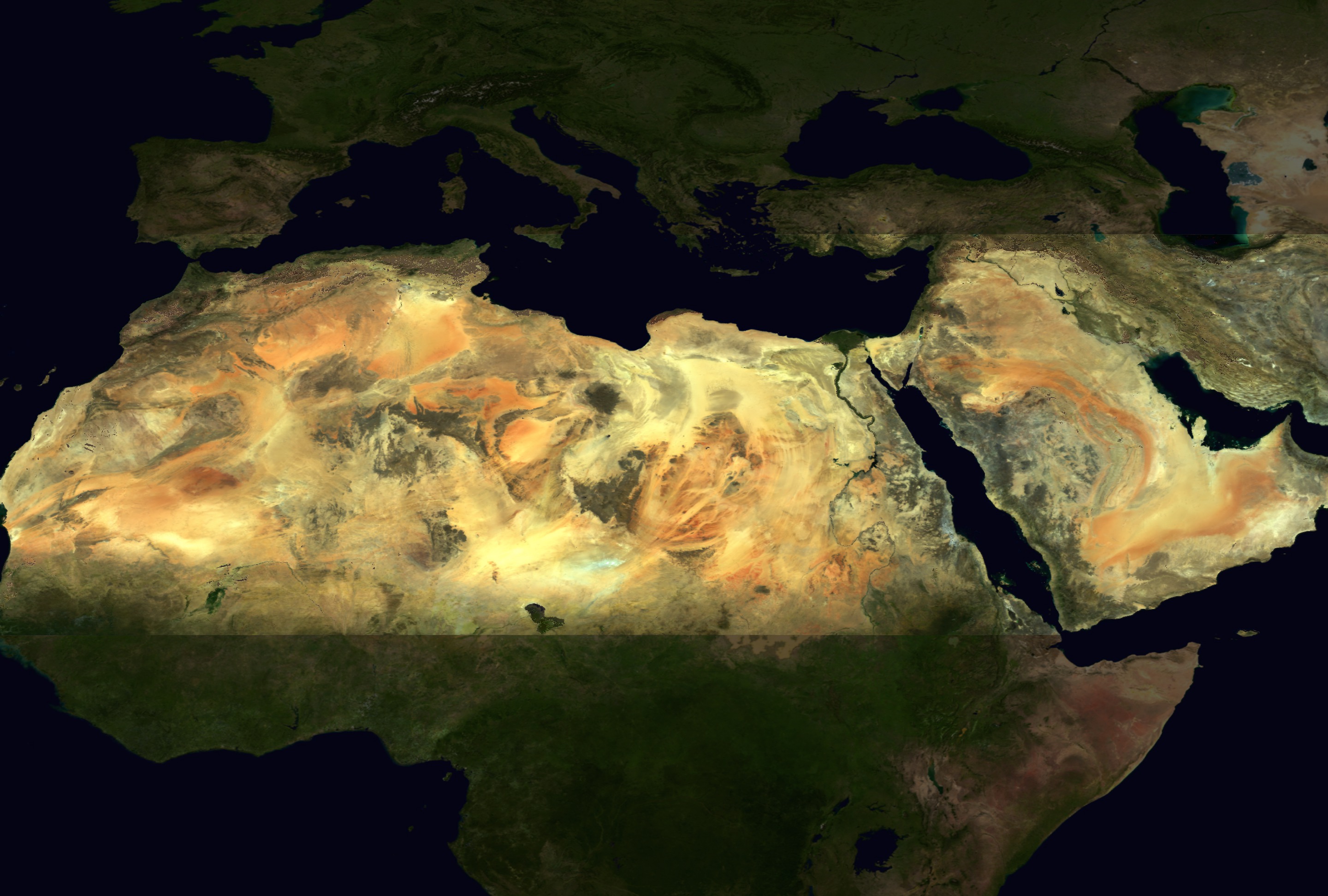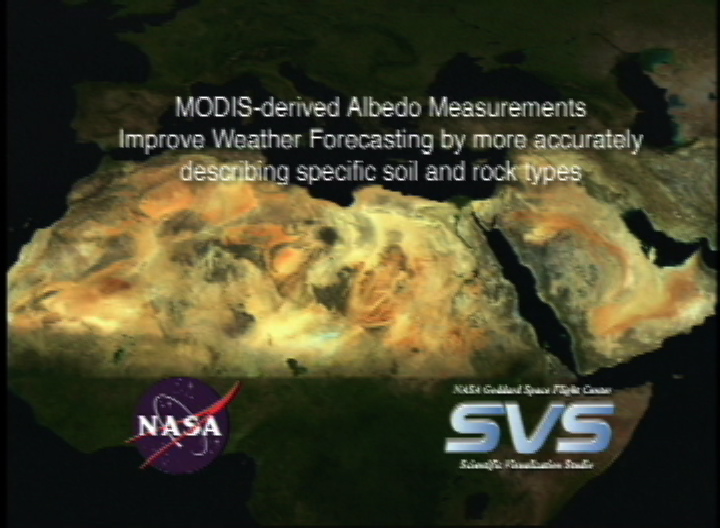Earth
ID: 2477
The MODIS instrument, flying aboard NASA's Terra and Aqua satellites, measures how much solar radiation is reflected by the Earth's surface almost every day over the entire planet. Zooming in on Africa's Sahara Desert and the Arabian Peninsula, MODIS observed considerable variability in reflectance across the region-from the darkest volcanic terrains to the brightest sand. This matches specific soil groups and rock types to MODIS-derived albedo measurements. This correlation is important because most current weather forecast models treat this region as if the surface is uniform and therefore reflects the same amount of light all across its wide expanse. However, the terrain across the Sahara Desert and Arabian Peninsula is actually quite varied. Darker surface features (like rocks and plant canopies) absorb more light than lighter surfaces (like sand) and therefore get hotter in the afternoon. Over the course of a day, these heating differences can set up atmospheric motions that influence global clouds and rain.


True Color MODIS Albedo Image Improves Climate Modeling


For More Information
Visualization Credits
Lori Perkins (NASA/GSFC): Lead Animator
Crystal Schaaf (Boston University): Scientist
Elena Tsvetsinskaya (Boston University): Scientist
Crystal Schaaf (Boston University): Scientist
Elena Tsvetsinskaya (Boston University): Scientist
Please give credit for this item to:
NASA/Goddard Space Flight Center Scientific Visualization Studio
NASA/Goddard Space Flight Center Scientific Visualization Studio
Short URL to share this page:
https://svs.gsfc.nasa.gov/2477
Mission:
Terra
Data Used:
Note: While we identify the data sets used in these visualizations, we do not store any further details nor the data sets themselves on our site.
This item is part of this series:
MODIS Albedo
Keywords:
SVS >> Albedo
DLESE >> Climatology
SVS >> Forecast
DLESE >> Physical geography
NASA Science >> Earth
https://svs.gsfc.nasa.gov/2477
Mission:
Terra
Data Used:
Terra/MODIS
2000/11/01This item is part of this series:
MODIS Albedo
Keywords:
SVS >> Albedo
DLESE >> Climatology
SVS >> Forecast
DLESE >> Physical geography
NASA Science >> Earth











